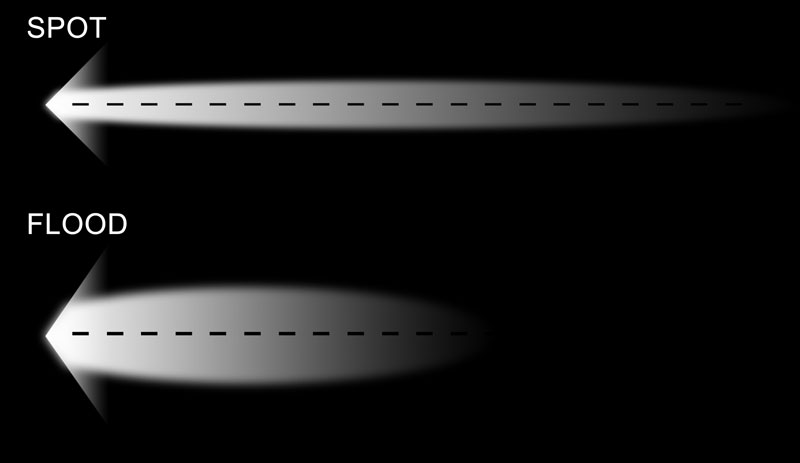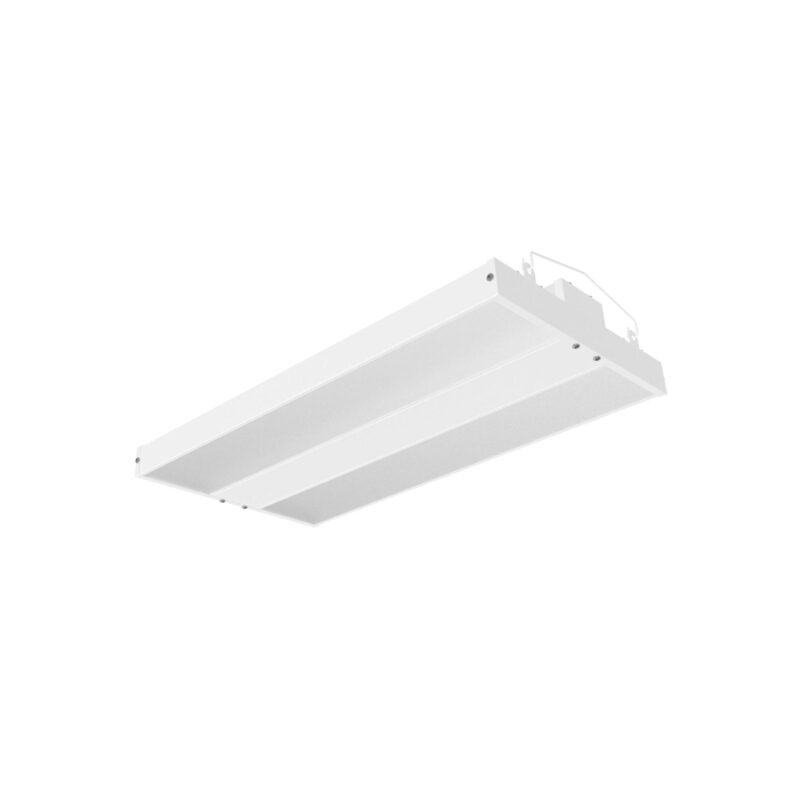LED フラッドライトとスポットライトの違いは何ですか?|LEDRHYTHM

LED フラッドライトとスポットライトは全く異なる照明です。フラッドライトは柔らかで広い光を放し、高天井用照明でもスタジアム照明でも、均一な光を提供することができます。 スポットライトの光はより眩しく、ステージのフォローライトや車のヘッドライトなど、重要なポイントをつかむことができます。
LED フラッドライトとスポットライトとは?
フラッドライトは照明範囲が広く、柔らかで均等な照明をし、主に広域を照らすために使われます。そのビーム角度は通常 120° ~ 150° の間です。よく見られるシーリングランプ、ダウンライト、広角LEDなどはいずれもフラッドライトです。
スポットライトは照明範囲が狭く、集中して光を放射し、局所領域を照らすために使われます。そのビーム角度は通常15° ~ 45° の間です。よく見られるフォロースポットライト、懐中電灯、車のヘッドライトなどはいずれもスポットライトです。
LED フラッドライトとスポットライトを選ぶ方法?
フラッドライトとスポットライトを選ぶには、使用環境に適合することを前提としており、以下のことで自分に適してライトをお選びいただけます。
1、ビーム角度
フラッドライトのビーム角度は通常 120° ~ 150° の間ですが、スポットライトのビーム角度は通常15° ~ 45° の間です。照明の範囲に応じてビーム角度を選択することができます。
2、色温度
色温度は光源が発している光の色を定量的な数値で表現する尺度で、主に「電球色」「温白色」「白色」「昼白色」「昼光色」に分類されますが、それぞれ約3,000 K、3,500 K、4,200 K、5,000 K、6,500 Kにあたります。使用環境により、適切な色温度を選択したほうがいいです。
3、光束
光束は光の明るさを表示しており、単位がルーメンです。十分な明るさが必要な場所で、より高いルーメンのランプを選択すべきです。
4、CRI
CRIは、理想的または自然な光源と比較してさまざまな物体の色を忠実に再現するための、光源の能力の定量的測度です。真の色を表示する必要がある場合、CRI90以上のライトを選択したほうがいいです。
5、防水規格
取付環境に応じて適切な防水規格を選び、通常室内 IP20、屋外 IP65 以上です。
6、品質と寿命
発光効果が良く、寿命が長いライトを選択します。
LEDRHYTHMのフラッドライトは最大IP65の防水性能を備え、高効率で省エネなどのメリットがあります。 フラッドライトのあらゆるニーズを満たすことができます。








